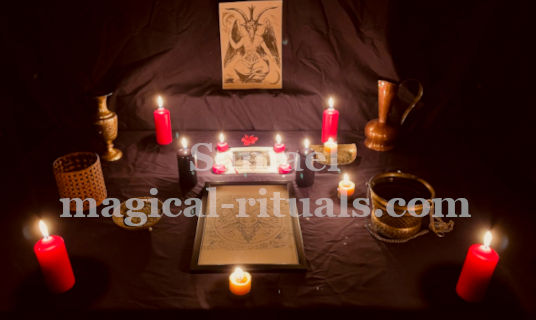
Love spell reviews
Love has captivated human hearts throughout history, inspiring countless tales of passion, desire, and devotion. In the pursuit of love, people have turned to various practices, including the mystical realm of magic. Love spells, with their promise of kindling affection and deepening connections, have been an integral part of folklore and ancient traditions. In this article, we will explore the concept of classic love spells, their historical significance, and the ethical considerations surrounding their use. Love spells are rituals or incantations designed to attract love, enhance romance, or deepen emotional connections between individuals. These enchantments often draw upon symbolism, intent, and belief in the power of the supernatural. While the specific methods and ingredients may vary across cultures and traditions, the underlying aim is to manifest love’s energies and create an atmosphere of affection and passion.
Historical significance
The origins of love spells can be traced back to ancient civilizations, where love and fertility were intertwined with spirituality and the divine. In ancient Egypt, Greece, Rome, and other cultures, love deities were invoked to grant blessings upon relationships and marriages. The use of magic in matters of the heart also appears in medieval Europe, where witches and cunning folk were sought after for their knowledge of love charms.
The elements of a classic love spell
- Intent and focus: The foundation of any love spell lies in the intent of the practitioner. A clear and sincere desire for love and affection is crucial to harness the energies needed for the spell to be effective. Focused concentration during the ritual helps channel these intentions into the enchantment.
- Symbolism and correspondences: Love spells often incorporate symbols and correspondences associated with love. These may include roses for romance, candles for passion, or the color pink for affection. Each element is chosen for its symbolic representation and its ability to amplify the spell’s intent.
- Incantations and invocations: Words hold tremendous power in love spells. Incantations, whether spoken or written, serve to express the practitioner’s intentions and invoke the energies of love. The choice of words and the emotion behind them are essential to the success of the spell.
- Herbs and charms: Herbs and charms are frequently used in classic love spells for their natural energies and enchanting properties. Common herbs associated with love include rose petals, jasmine, and lavender. Amulets and talismans are also employed to carry the energies of love with the practitioner.
- Timing and Lunar Phases: The timing of a love spell can be significant. Some practitioners choose to cast their spells during specific astrological events, such as a full moon, to harness the moon’s feminine energy associated with love and emotion. Additionally, certain days of the week or times of the year may be deemed more auspicious for love-related magic.
Modern interpretations
In contemporary times, love spells continue to intrigue and inspire seekers of romance and affection. Modern practitioners of various magical traditions may adapt and personalize classic love spells to align with their beliefs and intentions. Some focus on self-love and healing, while others seek to strengthen existing relationships or attract new connections with the universe’s guidance.
In Conclusion
Classic love spells are woven into the tapestry of human history, a reflection of the timeless pursuit of love and the desire for connection. With symbolism, intent, and a touch of magic, these enchantments have fascinated generations, sparking hope and passion in the hearts of those who seek the ineffable magic of love. While the practices and methods may vary, the essence of love spells remains a celebration of the human spirit’s most profound emotion. When approached with respect, integrity, and a genuine desire for love’s purity, these spells can serve as reminders of the boundless potential for romance and connection in the human experience.
Comparison of Egyptian love spells and Voodoo love spell
Throughout history, diverse cultures have woven the threads of magic into their beliefs and practices to enhance love and attraction. Two fascinating mystical traditions that stand out in the realm of love spells are Egyptian love spells and Voodoo love spells. Rooted in ancient wisdom and steeped in rich cultural heritage, both offer unique approaches to harnessing the energies of love. In this article, we will delve into the characteristics, rituals, and differences between these captivating enchantments.
Egyptian Love Spells
Historical Significance: The ancient Egyptians held love in high regard, believing it to be an integral part of the cosmic order. Love spells were an essential part of their magical practices, invoking the blessings of love deities like Hathor, Isis, and Bastet. These spells aimed to attract affection, enhance relationships, and foster emotional connections between individuals.
Characteristics: Egyptian love spells often incorporated symbolic elements, such as amulets, herbs like rose petals and jasmine, and sacred words of power. Rituals were performed to invoke the gods’ assistance, seeking their blessings for the seekers’ desires. Intent and concentration were crucial, as the practitioner focused on manifesting love’s energies through the guidance of deities associated with love and fertility.
Voodoo Love Spells
Historical Significance: Voodoo, originating from the African diaspora, found its way to the Americas through the transatlantic slave trade. Rooted in the beliefs of African tribes and infused with elements from Christianity and indigenous traditions, Voodoo encompassed a vast array of rituals, including love spells. In Voodoo, love spells served to strengthen relationships, reunite lovers, or attract new partners.
Characteristics: Voodoo love spells incorporated a combination of elements, such as herbs, amulets, candles, and dolls (voodoo dolls). The spells often involved invoking spirits and Loa (deities) through rhythmic dances and drumming, creating a powerful trance-like state for the practitioner. Ritual practitioners, known as Houngans and Mambos, acted as intermediaries between the human and spirit realms.
Comparing Egyptian Love Spells and Voodoo Love Spells
- Cultural roots: Egyptian love spells find their origins in ancient Egypt, where love and spirituality were interwoven. Voodoo love spells, on the other hand, emerged from the diverse beliefs of African tribes and evolved through the syncretism of different cultural influences in the Americas.
- Deities and spirits: Egyptian love spells sought the assistance of love deities like Hathor and Isis. Voodoo love spells, on the other hand, invoked spirits and Loa, believing in the power of these beings to influence love and relationships.
- Ritual elements: While both traditions incorporated symbolic elements such as herbs and amulets, Voodoo love spells also included voodoo dolls as a means of representation and connection with the targeted individual.
- Ritual performance: Egyptian love spells involved focused concentration and the recitation of sacred words. Voodoo love spells, in contrast, often featured rhythmic dances, drumming, and trance-like states to establish a connection with the spirit world.
In Conclusion
Egyptian love spells and Voodoo love spells are captivating windows into the human pursuit of love and passion. Rooted in ancient wisdom and cultural heritage, they offer unique approaches to invoking the energies of love. While their rituals and deities differ, both traditions share a reverence for love’s power and a commitment to ethical considerations. As modern practitioners explore these mystical arts, they are reminded of the timeless quest for love that unites humanity across time and space.




